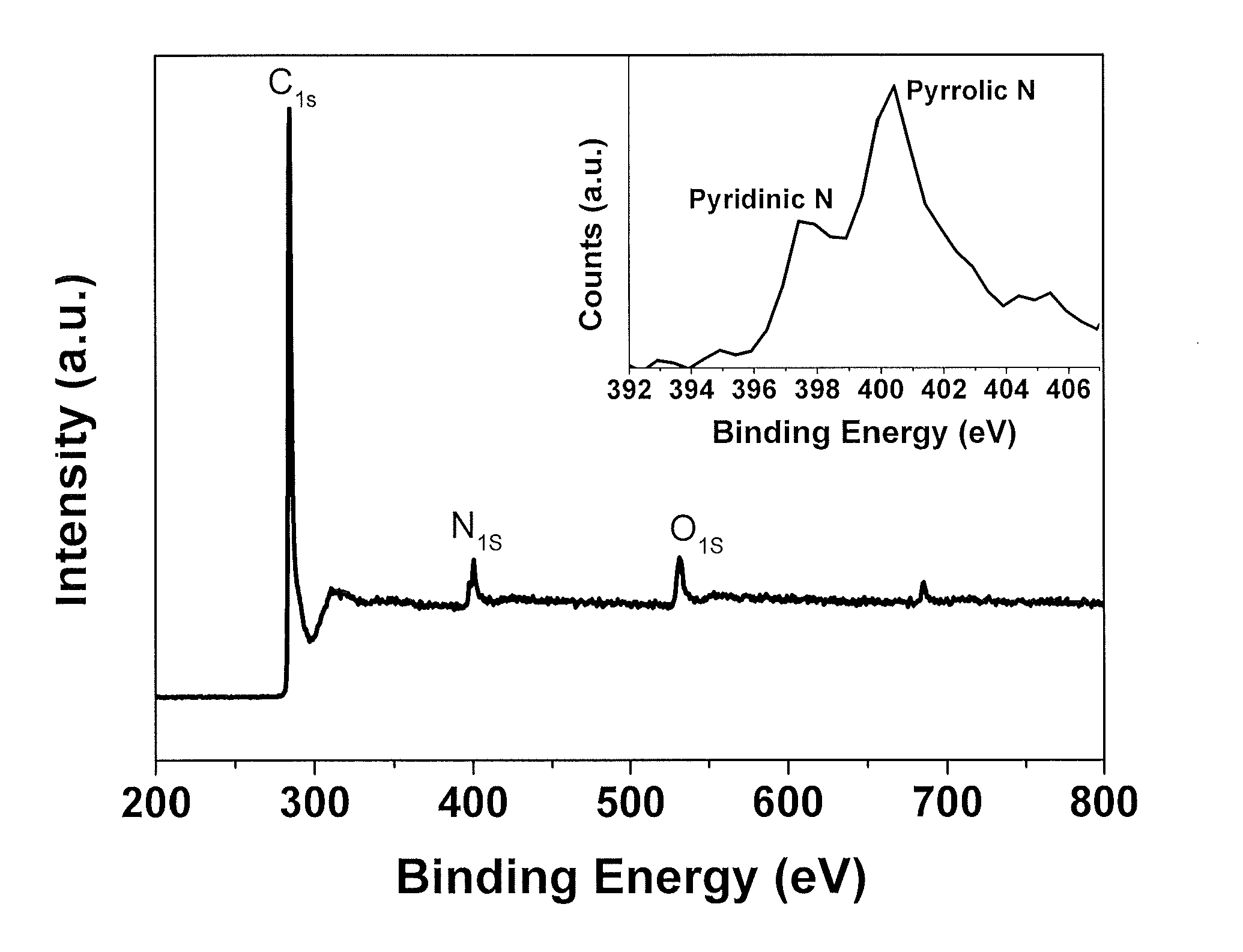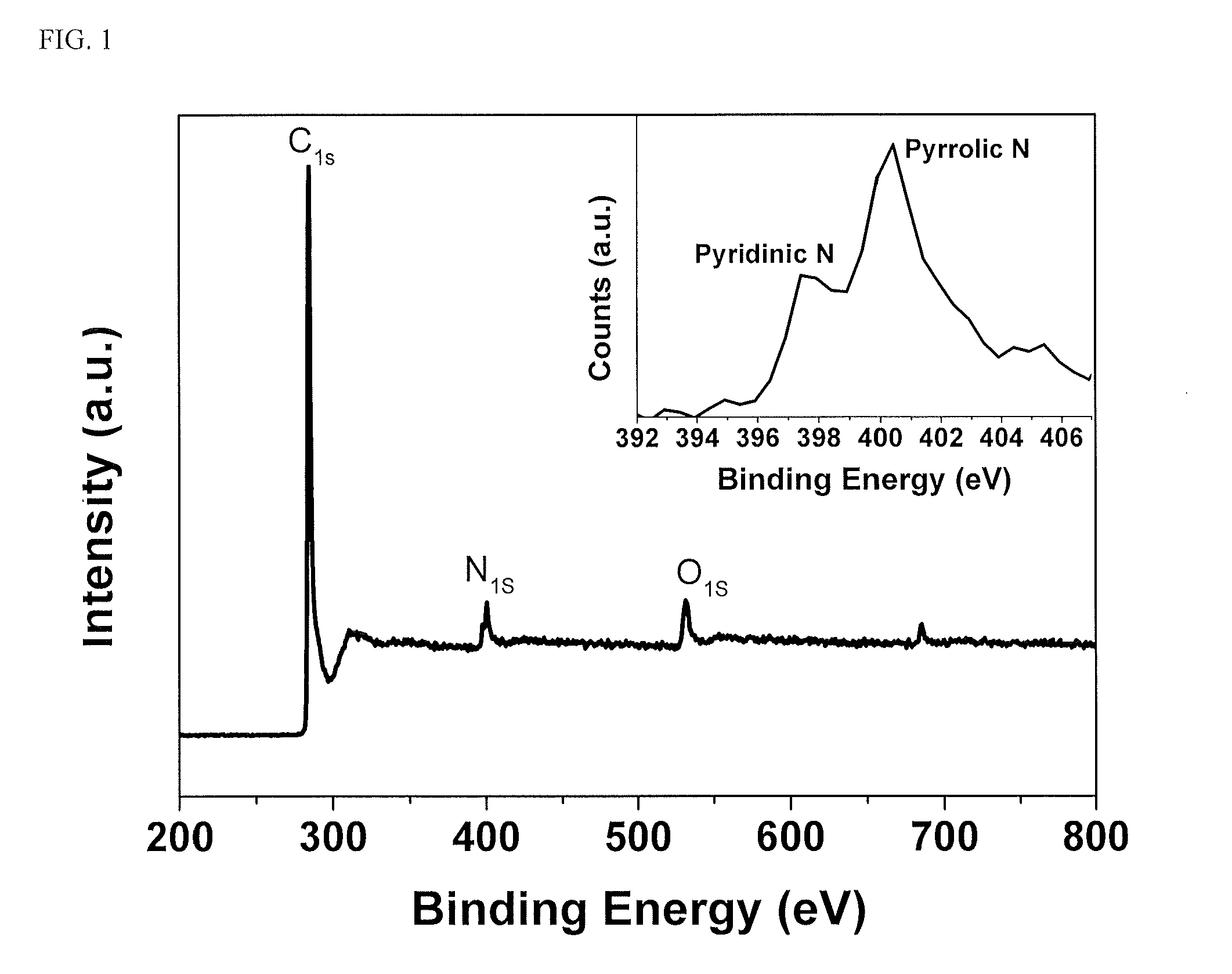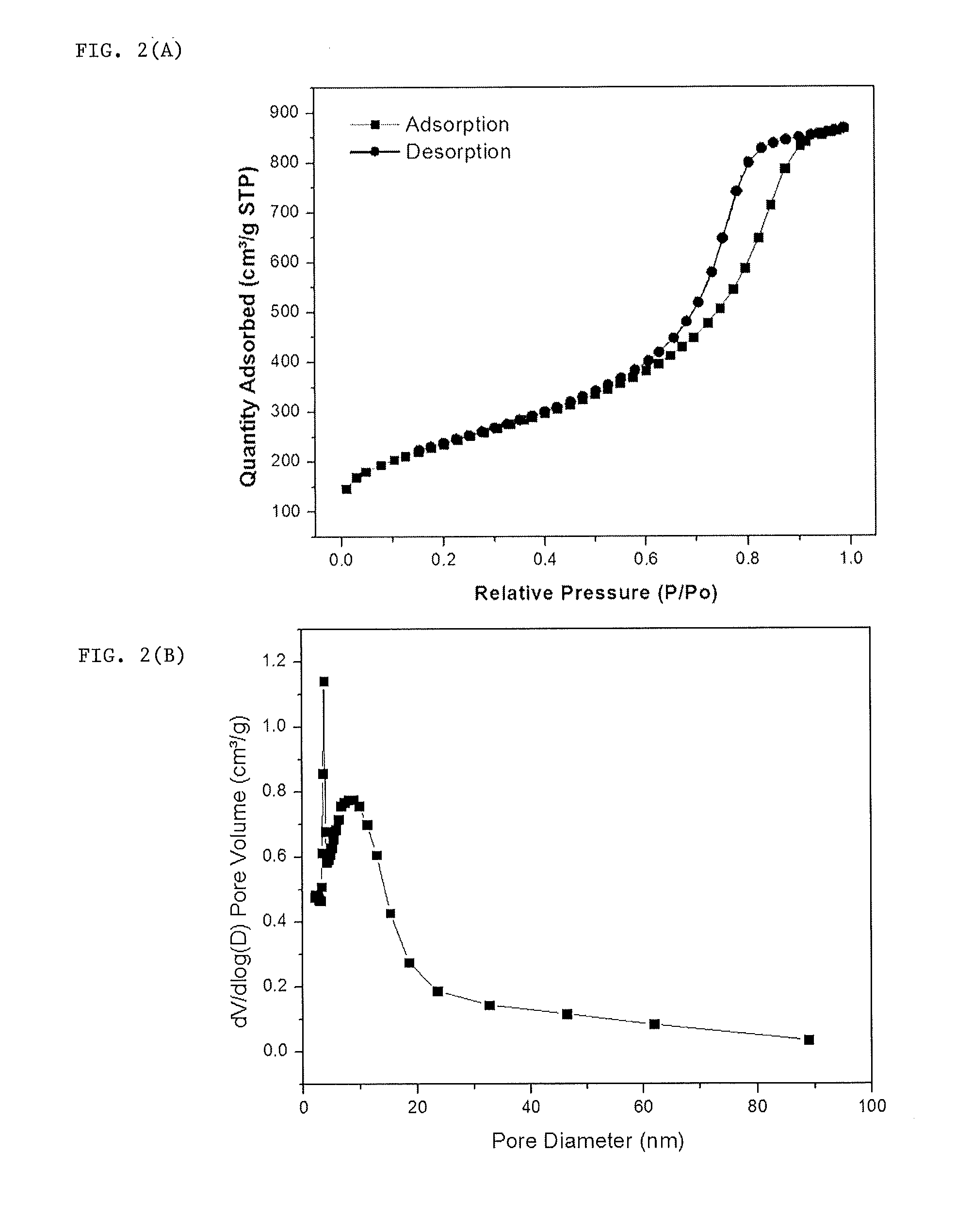Doped carbon-sulfur species nanocomposite cathode for Li—S batteries
a carbon-sulfur species and nano-composite technology, applied in the field of doped carbon-sulfur species nano-composite cathode for li-s batteries, can solve the problems of poor capacity, fast capacity fading, and hinder the practical realization of a li-s battery, and achieve high coulombic efficiency, inhibit diffusion, and high capacity retention
- Summary
- Abstract
- Description
- Claims
- Application Information
AI Technical Summary
Benefits of technology
Problems solved by technology
Method used
Image
Examples
example 1
Preparation of Nitrogen-Doped Carbon (N-PC)
[0051]The N-PC nitrogen-doped nanoporous carbon was prepared through a facile in-situ strategy. A commercial melamine-formaldehyde (“MF”) oligomer was selected as a polymer precursor to provide carbon and nitrogen sources. This offers the feasibility for large scale fabrication.
[0052]To get high pore volume and high surface area for sulfur loading and immobilizing, tetraethyl orthosilicate (precursor of SiO2 @ 3-5 nm), amphiphilic triblock copolymers (PEO-PPO-PEO, pluronic F127), and colloidal SiO2 nanoparticles (10-20 nm) were used as soft or hard porous templates. The synthesis included evaporation-induced multicomponent co-assembly to form a homogeneous structure, followed by carbonization and removal of a porous template.
[0053]In this example the nanoporous nitrogen doped carbon was prepared by using MF (melamine formaldehyde) as a polymer precursor. Hydrophilic and colloidal silica were used as the soft and hard preparation template. 1...
example 2
Method for Preparing Nitrogen-Doped Carbon (N-PC)
[0054]In one preparation of X-PC, 1.65 g block copolymer F127 (from Pluronic) was first dissolved in 8 g ethanol with 1.0 g 0.2 M HCl and stirred for 1 hour (h) at 40° C. to afford a clear solution. Next, 2.08 g TEOS (tetraethyl orthosilicate) and 5.5 g 20 wt % resol ethanolic solution were added in sequence. After being stirred for 2 h, the mixture was transferred into large petri dishes. The mixture was left overnight to evaporate ethanol and then heated for 24 h at 100° C. in an oven to thermopolymerize. The as-made products were scraped from the dishes.
[0055]Calcination was carried out sequentially in a tubular furnace, first at 350° C. for 3 h and next at 900° C. for 2 h under argon flow to get PC-SiO2 nanocomposites. The heating rate was 1° C. / min below 600° C. and 5° C. / min above 600° C. The PC-SiO2 nanocomposites were immersed in 2 wt % HF (hydrofluoric acid) solutions to remove silica, leaving porous carbon (PC).
[0056]The as-...
example 3
Preparation of Boron-Doped Carbon Materials (B-PC)
[0057]1.0 g block copolymer was dissolved in 10 ml ethanol with 1.0 g 0.2 M hydrochloric acid (HCl) and stirred for 1 h for 40° C., giving a clear solution. Then silica latex and 5.0 g of 20 wt % phenolic resins ethanolic solution, 0.5 g boric acid were added in sequence. After being stirred for another 2 hours, the final transparent solution was transferred into petri dishes.
[0058]After the solvent was allowed to evaporate overnight in the hood at room temperature, the film was further cross-linked in an oven at 100° C. for 12 h and 150° C. for 2 hour, respectively. Finally, the products were calcined at 900° C. for 2 h with a temperature increase rate of 1° C. / min to obtain three dimensional mesoporous boron doped carbon composites.
Example 4
Preparation of Nitrogen-Doped Graphene
[0059]Graphene oxide (GO) was first synthesized as precursor for nitrogen-doped graphene. GO was prepared by using a modification of Hummers and Offeman's m...
PUM
| Property | Measurement | Unit |
|---|---|---|
| size | aaaaa | aaaaa |
| electrical conductivity | aaaaa | aaaaa |
| pore size | aaaaa | aaaaa |
Abstract
Description
Claims
Application Information
 Login to View More
Login to View More - R&D
- Intellectual Property
- Life Sciences
- Materials
- Tech Scout
- Unparalleled Data Quality
- Higher Quality Content
- 60% Fewer Hallucinations
Browse by: Latest US Patents, China's latest patents, Technical Efficacy Thesaurus, Application Domain, Technology Topic, Popular Technical Reports.
© 2025 PatSnap. All rights reserved.Legal|Privacy policy|Modern Slavery Act Transparency Statement|Sitemap|About US| Contact US: help@patsnap.com



